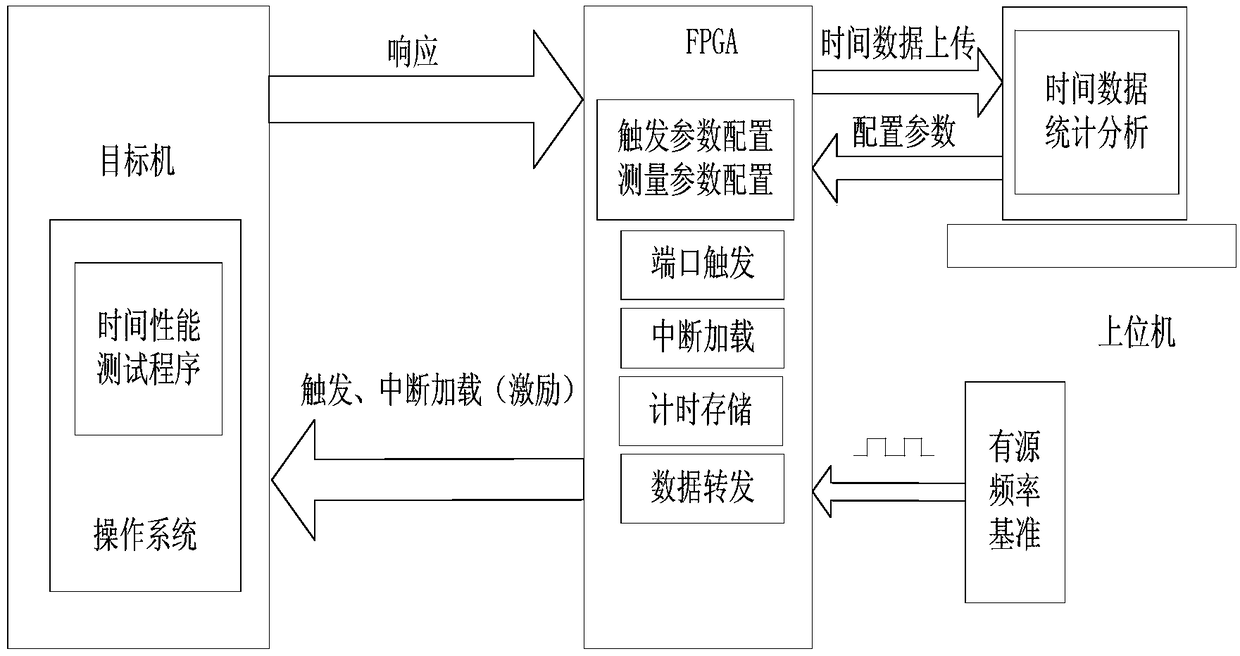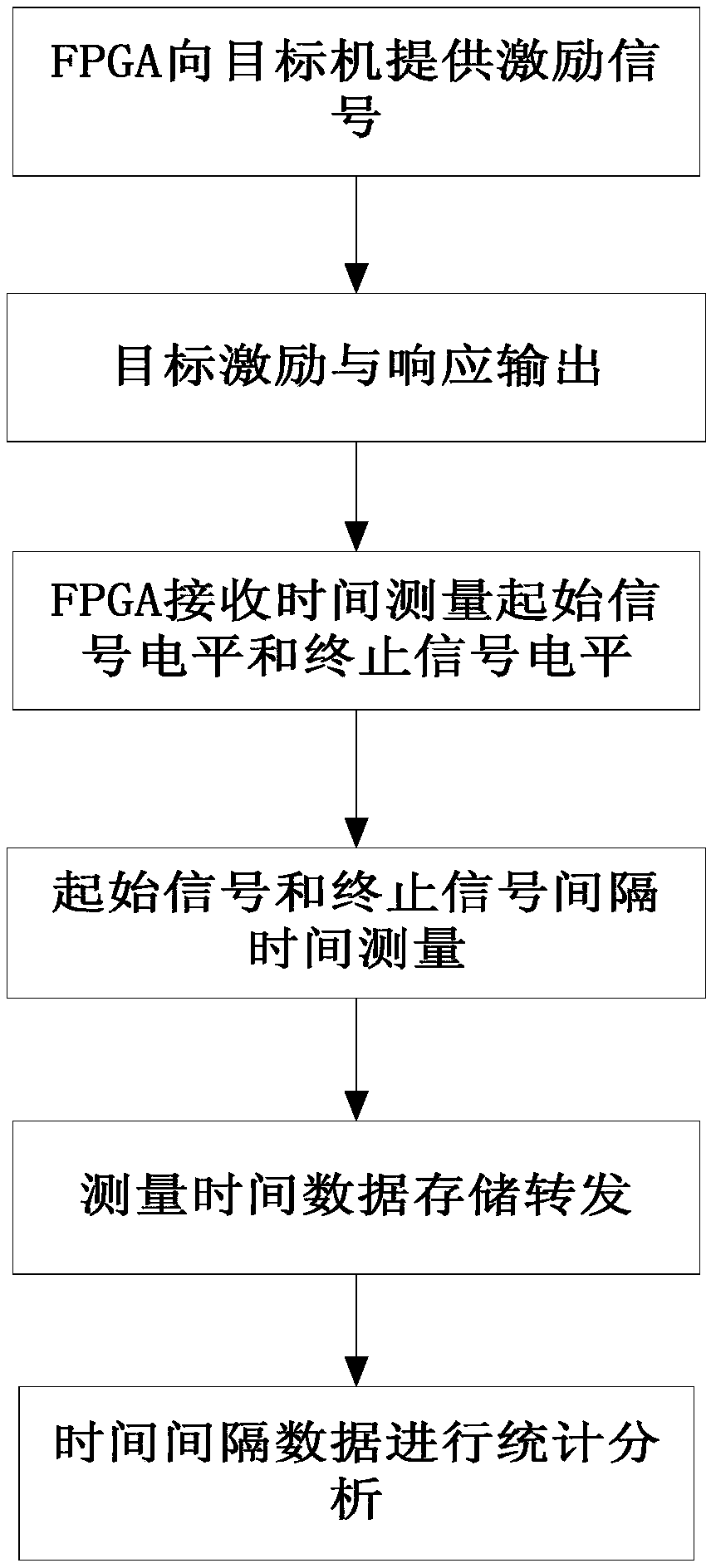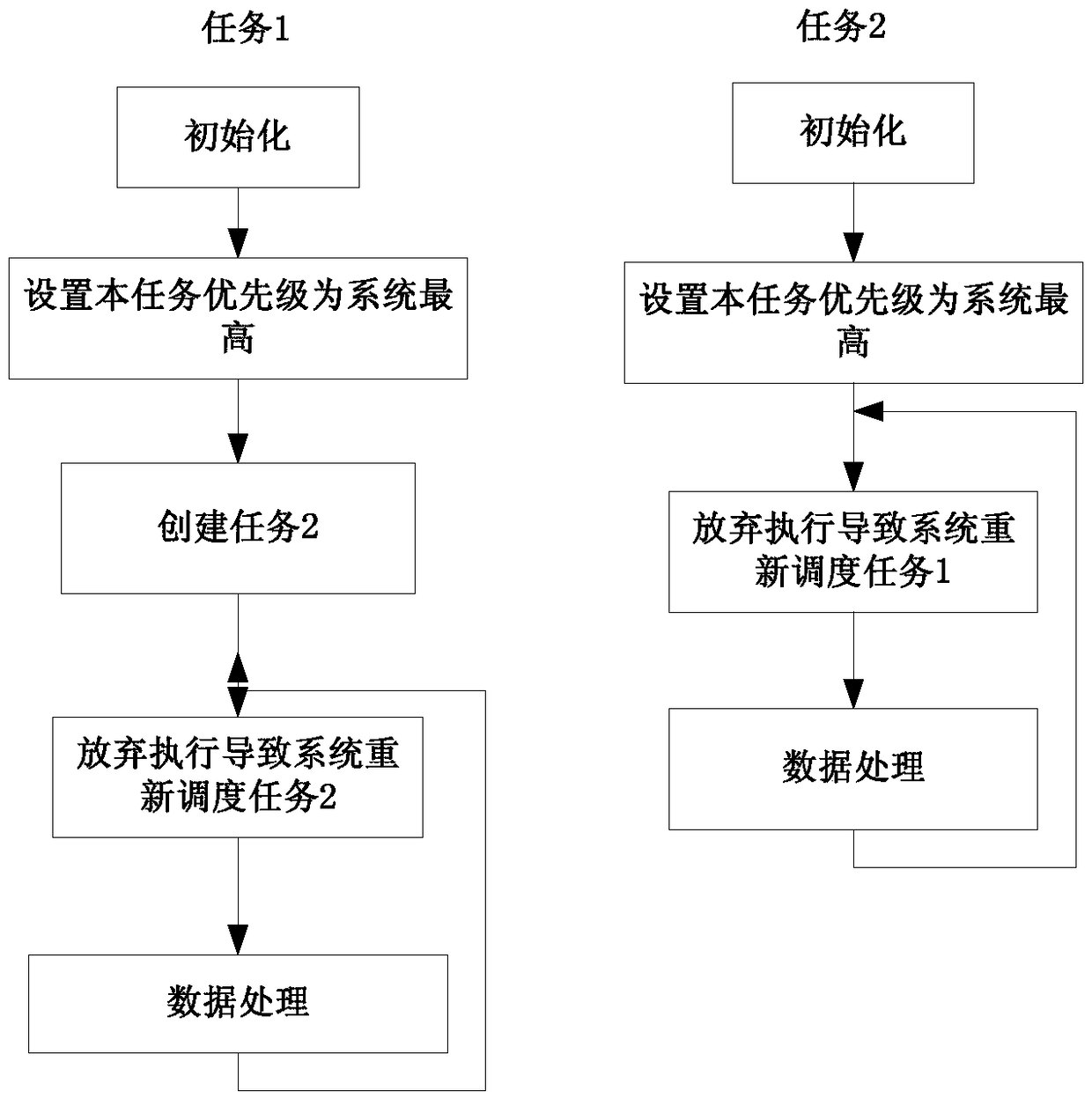Time performance test method of embedded real-time operating system based on FPGA
A real-time operating system and time performance technology, applied in software testing/debugging, error detection/correction, instruments, etc., can solve the problems of system scheduling CPU time occupation, affecting test accuracy, poor flexibility, etc., to improve test accuracy and improve Flexibility, reduced syscall and signal latency effects
- Summary
- Abstract
- Description
- Claims
- Application Information
AI Technical Summary
Problems solved by technology
Method used
Image
Examples
Embodiment 1
[0078] This embodiment specifically describes the method for testing the time performance index of the embedded real-time operating system using FPGA proposed by the present invention. The detection method is applied to the interrupt response time performance test of an embedded real-time operating system.
[0079] like figure 1 Shown, described time testing method comprises the steps:
[0080] Step 1: The FPGA provides an excitation signal to the target machine, and the input excitation signal here is the external interrupt source of the target machine. Step 1 consists of the following steps:
[0081] Step 101, setting frequency f, signal duration t, and trigger times n of the interrupt trigger signal at the host computer to determine the interrupt input source parameters of the target machine;
[0082] Step 102, sending the excitation input source configuration parameters to the FPGA
[0083] Step 103, the FPGA outputs an interrupt signal to the target machine according ...
Embodiment 2
[0095] This example specifically describes the method for testing the time performance index of the embedded real-time operating system using FPGA proposed by the present invention. The detection method is applied to the task switching time performance test of an embedded real-time operating system.
[0096] Described time performance test method comprises the steps:
[0097] Step 1: Configure task switching time test measurement parameters and set the number of measurements;
[0098] Step 2: Run the time performance test program on the target machine, and output the start signal level and the end signal level of the measurement time;
[0099] Both the start level signal and the end level signal to be output during task switching time performance measurement are timely output by the test program. like image 3 Shown:
[0100] (1) Create two tasks 1 and 2 with the same priority. In order to avoid the influence of other tasks in the system, give these two tasks the highest p...
Embodiment 3
[0112] This embodiment provides a method for testing the time performance index of an embedded real-time operating system using FPGA, and the detection method is applied to the time performance test of the embedded real-time operating system.
[0113] Described time performance test method comprises the steps:
[0114] Step 1: FPGA provides excitation signal to the target machine;
[0115] Step 2: The target machine responds to the stimulus and outputs a response signal, and outputs the start signal level and end signal level of the measurement time;
[0116] Step 3: the FPGA receives the output of the target machine to measure the start signal level and the end signal level;
[0117] Step 4: FPGA uses its own time base to count, and measures the time interval between the start signal level and the end signal level;
[0118] Step 5: FPGA stores and forwards the measured multiple sets of time interval data to the host computer;
[0119] Step 6: The host computer performs sta...
PUM
 Login to View More
Login to View More Abstract
Description
Claims
Application Information
 Login to View More
Login to View More - R&D
- Intellectual Property
- Life Sciences
- Materials
- Tech Scout
- Unparalleled Data Quality
- Higher Quality Content
- 60% Fewer Hallucinations
Browse by: Latest US Patents, China's latest patents, Technical Efficacy Thesaurus, Application Domain, Technology Topic, Popular Technical Reports.
© 2025 PatSnap. All rights reserved.Legal|Privacy policy|Modern Slavery Act Transparency Statement|Sitemap|About US| Contact US: help@patsnap.com



